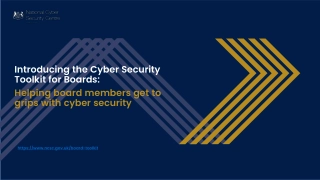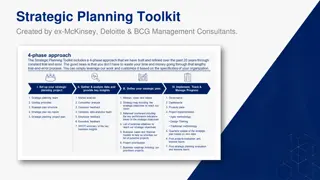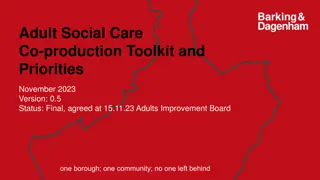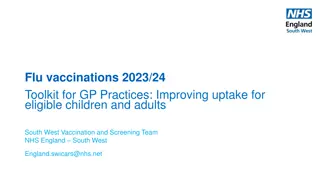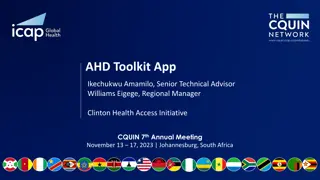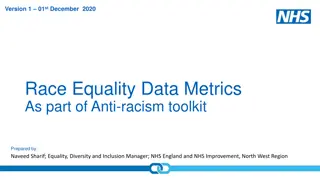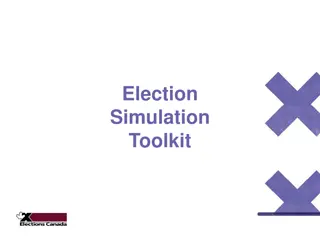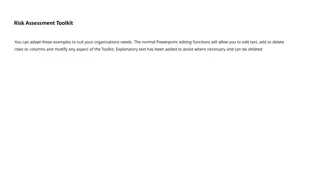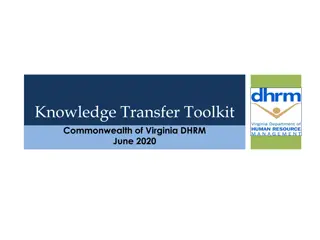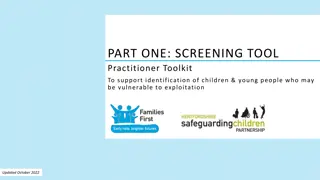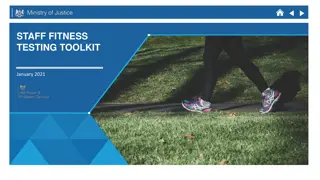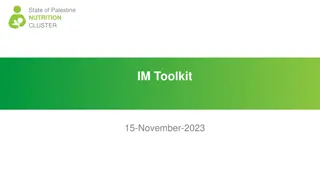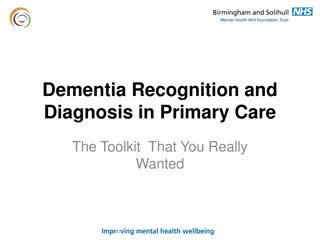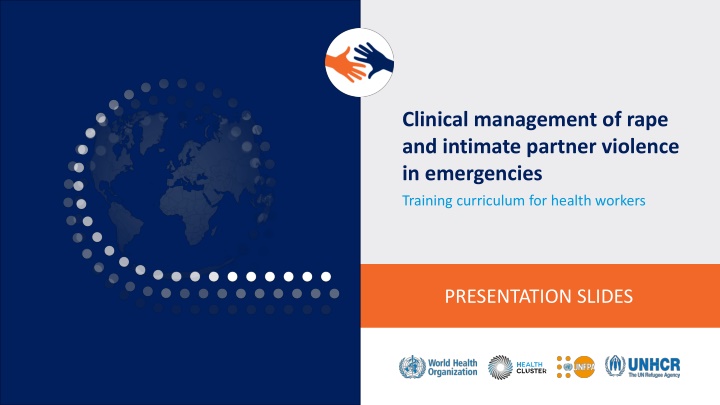
Gender-Based Violence: Training Curriculum Overview
This presentation slides training curriculum addresses the clinical management of rape and intimate partner violence in emergencies. It covers topics such as understanding sexual violence, gender-based violence forms and consequences, health workers' role in responding to assaults, and more. Explore the importance of recognizing and addressing gender-based violence as a public health problem.
Download Presentation

Please find below an Image/Link to download the presentation.
The content on the website is provided AS IS for your information and personal use only. It may not be sold, licensed, or shared on other websites without obtaining consent from the author. If you encounter any issues during the download, it is possible that the publisher has removed the file from their server.
You are allowed to download the files provided on this website for personal or commercial use, subject to the condition that they are used lawfully. All files are the property of their respective owners.
The content on the website is provided AS IS for your information and personal use only. It may not be sold, licensed, or shared on other websites without obtaining consent from the author.
E N D
Presentation Transcript
Clinical management of rape and intimate partner violence in emergencies Training curriculum for health workers PRESENTATION SLIDES
Session 1. Understanding sexual violence and IPV as a public health problem 1.2
Session objectives Objective 1: Demonstrate general knowledge of sexual violence and IPV as a public health problem Competencies: Know the epidemiology of the different forms of GBV at global and local levels, including in humanitarian contexts Know the health consequences of sexual violence and IPV for different populations Understand the role and limitations of health workers in responding to sexual assault and IPV in humanitarian emergencies, including minimum essential sexual violence response services that are part of the MISP for SRH 1.3
What is gender-based violence (GBV)? [A]ny act that results in physical, sexual, or mental harm, including threats, coercion or arbitrary deprivation of liberty, whether occurring in public or private life, and based on an individual s gender identity, gender roles or norms United Nations definition GBV disproportionately affects women and girls, and in situations of displacement, the risk of exposure to GBV increases for people of all genders https://youtu.be/3AF9Rjki0DE?si=nmGJuolWW8Vtev9W 1.4
Forms of gender-based violence Sexual Forced marriage Sexual exploitation / forced prostitution Rape Sexual harassment Physical Hitting, beating, burning, cutting Trafficking Acid attacks, honour killings Female genital mutilation (FGM) Emotional / psychological Insults, humiliation Confinement / isolation Intimidation / threats Blame for uncontrollable outcomes Social Discrimination and/or denial of opportunities Denial of education Denial of inheritance and/or property rights 1.5
Rape and sexual assault Rapeisany non-consensual penetration even if slight of the vulva, mouth or anus, using a penis, other body part or an object The attempt to do so is known as attempted rape Sexual assault is a common term used to refer to both attempted rape and rape Note: Legal definitions of rape vary from country to country and may or may not encompass non-consensual penetration between two people when those individuals are married 1.6
Essential service focus on sexual violence and IPV Prioritization of essential services in times of crisis demands hard choices. Sexual violence and IPV are the most prevalent forms of GBV worldwide, in both stable and emergency contexts. This session will discuss root causes of GBV, as they influence all its forms. Later sessions will focus on provision of health care for survivors of sexual violence and IPV. 1.7
Understanding the difference between sex and gender Gender Sex Socially constructed roles, responsibilities and attitudes (e.g. division of labour) Physically, biologically defined Gender rules and regulations are learned/imposed; we build them in our own minds Determined by birth; we are born with it Expressed by differences in dress and behaviour Determines our physical functions Differences between and within cultures include variables identifying differences in roles, responsibilities, attitudes, opportunities, expectations, needs and constraints Same throughout the world Changeable over time Generally unchangeable 1.8
Lets try a gender quiz Please read each statement below carefully. Does this issue relate to sex or gender? Tick the correct box Gender Sex Women must consume extra calories and safe water during lactation It is a man s responsibility to protect the honour of his family Female-bodied people will need resources and space to enable optimal menstrual hygiene Women and girls have a responsibility to ensure they don t get pregnant or have sex before they are married 1.9
Scenario 1: Flora Flora is the eldest of four children (three girls, and a 4-year-old brother). At age 15, attacks by a local militia group start to occur closer and closer to her village. One of her teachers is abducted and her parents insist the children stop going to school. When five of the girls from the village are also abducted, Flora s father announces they are leaving and will seek safety over the border in another country. It will take a week of walking. On the second day, Flora and her family come over the top of a hill to see a blockade across the road and members of the militia group all heavily armed. Flora s father tells the family to stay silent and let him do all the talking. The militia men look at Flora s family and tell her father that with so many daughters he can spare one, and they tell him to decide who he will give to them. Her father tries to offer them money instead, but one of the soldiers hits her father in the head with his gun. Her mother screams and kneels by his side. Then Flora sees one of the soldiers grabbing her 11-year-old sister. She starts to yell at the soldiers even though she is terrified, and even tries to hold on to her sister. The soldiers just laugh. One of them says, This one has fire . The others say, She will be too much trouble . The first soldier slaps Flora hard across the face. Everything goes dark and blurry for a moment and when her vision returns, she sees her sister being tied up in the back of a truck as it drives off. 1.10
Scenario 1: Flora Turn to your neighbours and discuss the following questions How does gender influence the power of the people in the story? Where do you see power contributing to and/or shaping violence? What forms of violence do you see? 1.11
Understanding men and boys as the primary perpetrators of GBV The greater the power an individual or institution holds, the easier it is for them to perpetrate GBV Any action, threat or exercise of control that uses gender roles and norms to decrease a person s power is GBV Intersectional factors increase or decrease a person s vulnerability 1.12
Global prevalence of violence against women (age 1549) 13% of ever-married/ partnered women have experienced physical or sexual IPV in the past 12 months1 27% of ever-married/ partnered women have experienced physical or sexual IPV in their lifetime1 133 women are victims of femicide every day2 38% of femicides are committed by the woman s current or a past intimate partner2 Globally, 19% of girls have experienced child or forced marriage1 6% of women have experienced non-partner sexual violence3 1.14
IPV is the most prevalent form of GBV regardless of country or context 1.15
Population groups at increased risk Pregnant women People living with HIV People with disabilities People who sell or exchange sex Persons with diverse sexual orientation, gender identity, gender expression (SOGIE) Women and girls living in or displaced by humanitarian emergencies Refugees and internally displaced persons (IDPs) Female heads of household Women and children migrating alone At least 1 in 5 female refugees and IDPs experience sexual violence4 1.16
GBV prevalence in Mozambique According to the UN Women Global Database:5 54% of women have experience of physical and/or sexual violence in their lifetime. 21.7% of women have experience of physical and/or sexual IPV in their lifetime. 15.5% of women report physical and/or sexual IPV in the last 12 months. 52.9% of girls are married before the age of 18. All prevalence data are estimates. GBV is routinely underreported, and data are rarely available at hyperlocal level. 1.17
How sexual violence and IPV impacts health Psychological trauma/ stress Physical trauma Fear and control 42% Limited health-care seeking: Lack of autonomy Restricted mobility Lack of contraceptive use Unsafe sex of women who have experienced IPV have suffered injuries TWICE as likely to experience depression 16% more likely to have a low-birth-weight baby Secondary diseases: Hypertension Irritable bowel syndrome Chronic pelvic pain 1.5 times more likely to acquire HIV, syphilis, chlamydia or gonorrhoea TWICE as likely to have an abortion Survivors are 4.5 times as likely to attempt suicide 1.18
Why a health system response? Health workers are often women s only point of contact outside of where they are living The sexual and reproductive health (SRH) needs of women, such as family planning, antenatal care and assistance with childbirth, create natural opportunities for women living with violence to develop trust with a health worker Health workers can be less intimidating to survivors than response workers in other sectors, such as police or judiciary personnel Health workers and health systems play a critical role in supporting survivors, mitigating the impact of violence and preventing violence 1.20
Care needs Survivors care needs are complex, but may include: Emotional support Reassurance Physical health care Safety may be an ongoing concern Referrals for other resources that you cannot provide Help to feel more in control and able to make their own decisions 1.21
Health worker responsibilities Do no harm Referrals as needed Identify violence Documentation Empathic response Medico-legal evidence Clinical care Advocacy as community role models 1.22
Health workers are NOT responsible for: Solving violence and related social issues Addressing all violence-related needs Addressing all aspects of treatment, care and support in one consultation 1.23
Do No Harm Possible consequences Health worker behaviour Blames or disrespects women or girls Does not recognize violence as a contributor to chronic or recurring conditions Fails to provide post-rape care or address violence against women in family planning or STI/HIV care Breaches privacy or confidentiality Ignores signs of fear or emotional distress Inflicts additional emotional distress or trauma Woman receives inappropriate or inadequate medical care Unwanted pregnancy, STIs, HIV, unsafe abortion, more violence Partner or family member becomes violent after overhearing information Woman is later injured, killed or commits suicide 1.24
Session 1: Thats a wrap GBV affects survivors physical and mental health Health services for survivors of sexual violence and IPV are essential during any emergency, and are essential components of implementing the MISP for SRH Health workers have an important role to play in providing support and care to survivors 1.25
References 1. Child Marriage Global Database [website]. New York: United Nations Children s Fund; 2023 (https://data.unicef.org/topic/child-protection/child-marriage/). 2. Gender-related killings of women and girls (femicide/feminicide): global estimates of female intimate partner/family-related homicides in 2022. Vienna: UNODC; 2023. 3. Violence against women prevalence estimates, 2018. Geneva: World Health Organization; 2021 (https://vaw-data.srhr.org/data). 4. Vu A, Atif A, Wirtz A, Pham K, Rubenstein L, Glass N et al. The prevalence of sexual violence among female refugees in complex humanitarian emergencies: a systematic review and meta-analysis. PLoS Currents. 2014;6. 5. Global Database on Violence against Women: Mozambique [website]. UN Women (https://data.unwomen.org/globala-database-on-violence-against- women/country-profile/Mozambique/country-snapshot).

